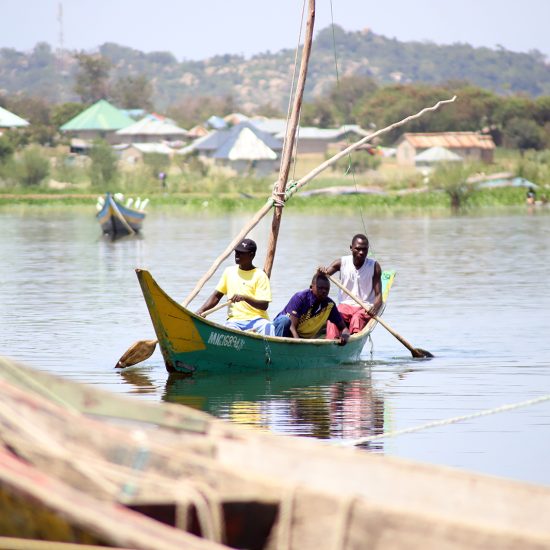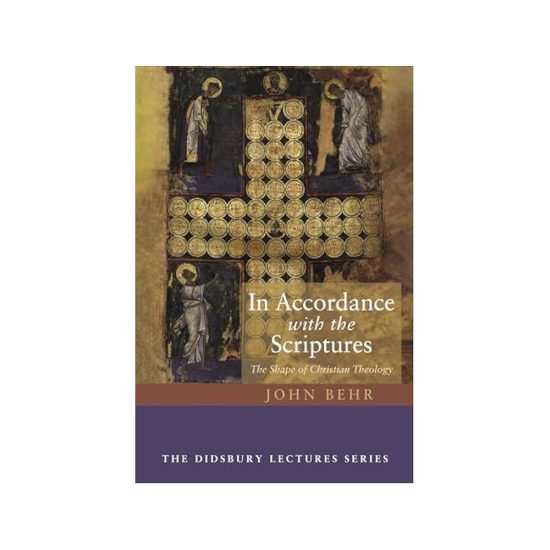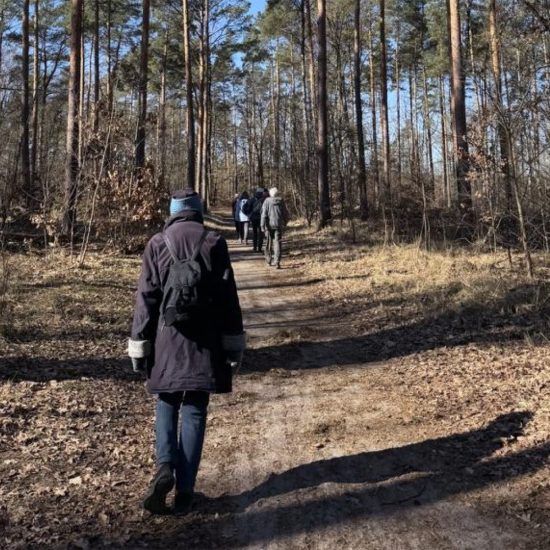

SPEAK WITH THE EARTH AND IT WILL TEACH YOU: A Field Guide to the Bible. By Daniel Cooperrider. Cleveland, OH: The Pilgrim Press, 2022. X + 188 pages.
The Psalmist declares:
O Lord, how manifold are your works!
In wisdom you have made them all;
the earth is full of your creatures.
There is the sea, great and wide;
creeping things innumerable are there,
living things both small and great. (Ps. 104:24-25).
I’m not sure how I would describe my connection to nature, but I do find a certain affinity to the natural world. While I’m not a camper, I enjoy spending time in the out of doors. I grew up in the shadow of Mount Shasta, an amazingly beautiful mountain, especially when covered with snow. To this day I am awestruck by its majesty. I’ve been blessed to spend time among the redwoods and sequoias, at the coast of Oregon and California, and now the lakeshores in Michigan and neighboring states. When we spend time in nature, it’s possible, if we’re open to it, to feel the presence of the Creator. Therefore, I can appreciate the words of the Psalmist and other biblical writers who ponder the majesty of God’s creation.

Robert D. Cornwall
Although one can profitably view nature through the lens of Scripture, Daniel Cooperrider has chosen to view scripture through the lens of nature. He does so in a way that is inviting and thought-provoking. Speak with the Earth and It Will Teach You is beautifully written, making it enjoyable to read. I think it’s worth emphasizing the word enjoyable because I did enjoy reading Speak with the Earth and It Will Teach You.
The author of Speak with the Earth and It Will Teach You: A Field Guide to the Bible, Daniel Cooperrider, is first of all a pastor in the United Church of Christ. He is also a self-described fly-fisher and forager. In this book, he draws from his experiences in nature while living and serving churches in Vermont and now in what he calls the “edge of the Driftless Area in Madison, Wisconsin.” The word “driftless” is explained late in the book as a region where glaciation did not take place. He also notes that he lives on Ho-Chunk land, acknowledging the indigenous people who were present before European settlement.
The starting premise here is the concept that two books of God exist — Scripture and Nature — both of which reveal something of God. While trained to look for God in Scripture, he notes that his congregation in Vermont slowly taught him a different way of reading for God. Through the influence of this congregation, he learned that could be found revealed not only in Scripture but also in nature. That is, his church taught him “that the church is not just a place to read and interpret the written scriptures of God, but a place to read and interpret the expressions of God that emanate constantly and from every corner of God’s creation.” (p. 3). Having been influenced by Karl Barth’s theology, which includes a rejection of natural theology, I can be leery of putting too much stock in nature. As Barth would point out, nature can lead us astray. Nevertheless, experience has also taught me that if I’m open to nature I can find signs that God is present in the natural world. In this book, Cooperrider invites us to pay attention to that other book of God, which is found in the witness of nature. He traces this idea of God’s two books to such figures as Augustine, Maximus the Confessor, Hildegard of Bingen, Thomas Aquinas, and many more.
The subtitle of Cooperrider’s book is instructive. He offers it as a field guide to the Bible. While he welcomes people using the book to explore the world, his “aim here is not to document and describe the flora and fauna recorded in the Bible. My aim is to reread the Bible in a living, breathing, yearning, determined search for God from the perspective of nature.” (pp. 10-11). With that goal in mind, he seeks to read scripture through the lens of the book of nature. In doing this he seeks to “foreground the presence of the natural world, and to focus on creation and the more-than-human drama of life as it presents itself in its elemental forms” (p. 11). With that in mind, he divides the book into four major sections reflecting the four classical elements of water, fire, earth, and air. Rather than using those four words as section titles, he chooses to speak in terms of Rivers (water). Mountains (Fire), Trees (Earth), and Clouds (air). Each section has four chapters that explore these concepts.
Using these four elements as a means of entering Scripture allows us to see things that are present in Scripture that we might miss otherwise. Cooperrider begins the conversation by focusing on water because we begin life in water, both physically and spiritually. He points out, relevantly, that water is one of the most important environmental issues of our time. While we are born out of water and composed bodily of water, Scripture begins in its open words with the Spirit of God moving across the waters. So that’s the starting point.
While water might have biological primacy, cosmologically has fire primacy. That is because the Big Bang Theory envisions a great explosion of fire out of which the universe is born. It is this fire that produces mountains, whether volcanoes or the movement of tectonic plates sitting on a molten core. Of course, in the biblical story, people, such as Moses and Jesus often encounter God on mountaintops. As is true of the first set of chapters, Cooperrider draws here from his own experience with mountains. He writes of the presence of mountains in scripture, that they “can be both occasions for theophany and intimate knowing of God, as well as occasions that reveal the immense gulf or gap in our knowledge of God” (p. 57). Of the latter consider Abraham’s attempted sacrifice of Isaac on Mount Moriah, Jesus’ temptation by the devil while standing on a very high mountain, and finally, Elijah’s experience while huddled in a cave on Mount Horeb. In the final chapter of this section, he points to Moses’ experience of seeing the Promised Land from a mountaintop while in the wilderness. Cooperrider writes “If you want to see paradise, the Bible seems to say at the end, go climb a mountain and look out, and shining through the landscape of the world, you just might glimpse it — everything fitting together — perfection perfected for a moment — a panorama of the Promised Land — this earth as the sanctuary, as the holy land, as la sainte terre, that it is” (p. 94).
From the mountains, Cooperrider takes up the lens provided by trees, which here stands in for the earth. He reminds us that in the second creation story, God creates Adam from the adamah, the humus or earth. It is good to remember that we are made from soil, such that as Jeremiah suggests, we are “clay in the potter’s hand” (p. 95). As for the trees, we must go back to the Garden where God forms trees after forming Adam. He writes that “although trees and plants existed for hundreds of millions of years before humans, Genesis is right to intuit that our stories are fatefully entwined.” (p. 98). When it comes to the trees, I acknowledge their witness, having spent time among the redwoods and sequoias of California. These majestic trees are awe-inspiring as they dwarf everything around them. The thing about trees is that they live in communities. While I’ve known this to be true, Cooperrider brings this to our attention as a way of reinforcing the human need for community. Of course, you can’t talk about trees and the bible without noting Abraham and Sarah’s act of hospitality at the Oaks of Mamre. Then, there’s the Tree of Life present both in Genesis and Revelation. Of this tree, Cooperrider writes that “in the biblical imagination, the Tree of Life is not just a little bit of the future. It is the future. Standing in for the whole evolutionary unfolding of life, for the whole generative cosmic itself, finding the Tree of Life flourishing at the end of time teaches us that our own future is inseparable from the larger, ecological community on which we are directly dependent” (p. 138). Indeed!
Finally, we get to Air, which is explored here in terms of the Clouds. Biblically, Cooperrider notes that air is connected to the spirit or the soul. Consider that in Genesis 2, God breathes life into the clay that becomes Adam. There is the Ruach, the Spirit, who hovers over the primordial waters. As for us, “our lives begin with a piercing birth cry as we gasp for our first breath, and our lives end when we stop breathing, as our last sigh dissipates and merges back into the universal reservoir of air” (p. 140). I really appreciated this last section focusing on the clouds, since, as Cooperrider points out, we often see them negatively. However, the Bible can envision clouds having a very positive presence. It’s often from clouds that God speaks. And then there’s the bow God places in the clouds that serve as a reminder to God not to destroy the earth with a flood. He also points out that ecologically those large stratocumulus clouds that cover two-thirds of the earth serve to cool the earth. Unfortunately, they’re disappearing, and thus their disappearance would be a great loss as this will lead to more global warming. Then there’s that great cloud of witnesses that the Book of Hebrews speaks of, as it acknowledges our spiritual ancestors.
Ultimately, Cooperrider writes in his epilogue about loving God through loving the world. As we read Scripture through the lens of nature, which opens our eyes to elements and dimensions of the biblical story that we can easily miss without this lens, Cooperrider also reminds us that there is an ecological crisis, especially a climate crisis, that is present with us. For example, not long ago it was reported that one hundred dolphins died in the Amazon as the river water reached a record temperature of 102 degrees. As we contemplate the witness of the clouds, might we pay attention to what is going on in nature? Our survival as a species depends on it.
Cooperrider concludes Speak with the Earth and It Will Teach You that this moment in time provides us with an opportunity and urgent call to “fall more deeply in love with the earth.” He believes this is “the call of our times that is coming to us from the direction of the earth — to love God with all our heart and with all our soul and with all our strength and with all our mind. To love God through loving the world” (p. 180). This call to love God by loving the world, and not just our immediate neighbor but the world itself, serves as an important lens to hear a new word from Scripture about God’s love of the world.
I can say that Speak with the Earth and It Will Teach You is a timely book that speaks to the heart, by pointing us to nature so that in turn we may read and understand the Bible anew. So, enjoy and be blessed as you read the book, for it is a field guide to the Bible, helping us recognize that creation is proclaiming the Glory of God. Oh, and don’t just read the book. Be sure to step out into nature and enjoy and be blessed by its witness to the glory of God.
You can learn more about this book by listening to our interview with Daniel Cooperrider on Dangerous Dogma.
This review originally appeared on BobCornwall.com.
Robert D. Cornwall is an ordained minister in the Christian Church (Disciples of Christ). Now retired from his ministry at Central Woodward Christian Church (Disciples of Christ) of Troy, Michigan, he serves as Minister-at-Large in Troy. He holds a Ph.D. in Historical Theology from Fuller Theological Seminary and is the author of numerous books including his latest “Second Thoughts about the Second Coming: Understanding the End Times, Our Future, and Christian Hope” coauthored with Ronald J. Allen. His blog Ponderings on a Faith Journey can be found at www.bobcornwall.com.






